The term “Organic” is all the rage among eco-conscious consumers. Whether its food items, cosmetics or textiles, every responsible person wants to choose products that are produced and processed in the cleanest way, i.e. free from harsh chemicals. And to assist you in investing in genuinely organic textiles, certifications like USDA and GOTS are at your service. These organic labels are a reputed mark of sustainable production practices.
Our feature on USDA Certified vs GOTS Certified items has every information you need to know to make the right textile shopping decisions. From the harvesting of raw materials to turning them into textile products, we have explored every measure taken by these certifications to evaluate a supply chain. Let’s understand how GOTS certified vs USDA certified items differ from each other and how these certifications can guide us in choosing organic textiles.
What is the Difference Between USDA Certified and GOTS Certified?
| Distinctions | USDA | GOTS |
| Focus Areas and Scope | USDA focuses primarily on agricultural production practices, including the use of organic seeds, fertilizers, and pest management methods. It covers the entire process from farm to final product but lacks specific standards for textile processing. | GOTS addresses both organic farming and clean processing of textiles, ensuring ecological criteria are met in the entire supply chain. It comprises organic textiles’ processing, manufacturing, packaging, labeling, and distribution. |
| Comprehensiveness of Standards | USDA’s parameters revolve around agricultural standards, with less emphasis on processing methods. Its chemical usage levels are regulated only till the fiber production stage. | GOTS’ standards are more comprehensive as they eliminate or limit values of chemicals and reduce the environmental impact of textile manufacturing throughout the production process. GOTS prohibits harmful chemicals and requires wastewater management, reducing potential environmental and human health risks. |
| Implications for Manufacturers and Consumers | USDA-certified manufacturers are required to observe organic farming practices. However, they have more flexibility in fabric processing methods. Hence, consumers may have less assurance about environmental and social aspects of production. | GOTS-certified manufacturers must meet strict criteria for farming and processing, verifying a higher level of environmental and social responsibility. Therefore, consumers can have greater confidence in the sustainability and ethics of GOTS-certified products. |
| Global Recognition and Acceptance | The USDA NOP labeling may be challenging for some garments due to processing methods that may not meet NOP requirements. | Both USDA and GOTS certification bodies are recognized globally, but GOTS is more widely accepted in the textile industry due to its holistic standards for processing. GOTS is also endorsed by USDA’s NOP. |
The United States Department of Agriculture or USDA is a federal agency responsible for developing and executing policies related to organic farming, agriculture, and food. In the context of textiles, the USDA holds regulatory authority over the term “organic” concerning agricultural products through its National Organic Program (NOP) Regulation. This regulation ensures the organic nature of raw natural fibers like cotton, wool, and flax fibers (linen), which fall under NOP’s crop and livestock production standards.
It is to be noted that NOP lacks specific processing or manufacturing parameters for textile products. However, any textile produced in full compliance with its regulations may bear the NOP-certified organic mark and display the USDA organic seal.
Criteria and Standards Set by the USDA for Certification
To attain USDA certification, textiles must adhere to specific criteria and standards established by the NOP. These standards cover diverse aspects, including the cultivation of organic crops without synthetic pesticides or genetically modified organisms (GMOs) and the humane treatment of organic livestock. The rigorous criteria aim to ensure the integrity of organic claims and uphold environmentally friendly and ethical practices.
Scope and Limitations of USDA Certification in Textile Production
The scope of USDA certification in textile production primarily revolves around the utilization of organic materials. However, the certification’s limitations are evident as it focuses explicitly on elements directly associated with cultivating organic crops and ensuring the ethical treatment of livestock. While the U.S. Department of Agriculture (USDA) commands that any clothing or fabric labeled as “organic” must be crafted from USDA-certified organic fibers, the regulatory oversight is confined to this aspect.
Notably, beyond the source of fibers, the USDA’s regulatory framework becomes less comprehensive. This loophole allows textile manufacturers to take organic cotton, for instance, and subject it to various processing that may involve synthetic ingredients, such as toxic dyes or harmful chemical treatments. As a result, the final product doesn’t have to be made entirely from organic fibers. It can legally incorporate a combination of organic and nonorganic materials while still being labeled as “made with organic cotton.”
NOP’s Requirement for Third-Party Certification
The NOP holds policies for labeling textile products. It doesn’t restrict the use of the term “organic” as long as fibers identified as “organic” comply with the NOP regulations. NOP collaborates with third-party certifiers, accrediting them to verify that farms and businesses follow national organic standards. This partnership between certifiers and the USDA ensures fair standards enforcement. It creates an equitable environment for producers and maintains consumer trust in the authenticity of the USDA Organic Seal.
What is USDA Certified?
GOTS, or the Global Organic Textile Standard, stands as a leading global certification system that sets processing standards for textiles crafted from certified organic raw materials like organic cotton. As a third-party certification initiative, it establishes rigorous environmental and social criteria across the textile supply chain, showcasing a dedication to sustainability and ethical production cycles.
GOTS strictly bans the use of genetically modified seeds (GMOs), harmful pesticides, and synthetic fertilizers in the cultivation of natural fibers, mainly cotton. The certification extends to diverse product categories like clothing, home textiles, mattresses, upholstery, personal hygiene items, and even textiles intended for food contact.
GOTS was formed in a joint effort by the Organic Trade Association (OTA, USA), Internationaler Verband der Naturtextilwirtschaft (IVN, Germany), The Soil Association (UK), and Japan Organic Cotton Association (JOCA, Japan). Its aim is to provide textile processors and manufacturers with a single, universally recognized organic certification for exporting their products globally.
There are two types of GOTS certification documents; Scope Certificates (SCs) and Transaction Certificates (TCs), play distinct roles in affirming a supplier’s adherence to processing parameters and verifying that goods meet GOTS product criteria.
Key Criteria for GOTS Certification
GOTS labels, including “Organic” and “Made with Organic,” signal different organic fiber percentages for production transparency. The “Made with Organic” textiles mandate a minimum of 70% certified organic natural fibers. On the other hand, products labeled as GOTS “Organic” must contain at least 95% certified organic fiber.
To bag the GOTS certification, every element of a finished product, from dyes to auxiliaries, must adhere to stringent environmental and toxicological criteria. Textile supply chains should adopt green practices such as water conservation and wastewater treatment plants to address the adverse effects of wet processing units.
GOTS also mandates fair labor standards, prohibiting forced or child labor, ensuring hygienic working conditions, and confirming the absence of harmful residues and heavy metals for consumer safety. To top it all, companies must also avoid PVCs in packaging and opt for eco-friendly alternatives like recycled or FSC/PEFC-certified paper biodegradable materials.
Benefits of GOTS Certification
- The GOTS seal guarantees organic authenticity and a dedication to environmental and social responsibility.
- Verification by third parties ensures transparency across the entire organic supply chain.
- Focus on employee welfare, safety, and rights reflects ethical business practices.
- Sustainability is promoted through the GOTS Monitor, which oversees water and energy consumption.
- GOTS-approved chemical inputs comply with eco-friendly processing standards outlined in the Manufacturing Restricted Substance List (MRSL).
- Thorough examination of accessories identifies and eliminates hazardous chemicals and pesticide residues.
- As a respected independent certification, it maintains high technical quality standards, including color retention and textile shrinkage.
USDA Certified vs GOTS Certified: Environmental Impact Standards
USDA
The USDA NOP’s scope is limited to organic agriculture of raw materials. It monitors cultivation practices in growing natural fibers (cotton, wool, and linen) by using organic seeds, conserving soil conditions, and implementing pest control methods. Its parameters do not have detailed environmental standards for textile production processes. While emphasizing organic cultivation, the NOP does not provide specific criteria for energy usage, waste management, or the broader environmental impact associated with textile manufacturing. This lack of wholesome environmental standards limits USDA Certified products’ ability to portray a holistic commitment to sustainable textile production.
GOTS
GOTS takes a broader approach by addressing every aspect of environmental sustainability in the textile supply chain. From standards for energy efficiency to low water usage and waste treatment — every production stage guarantees green manufacturing techniques and a reduced carbon footprint. GOTS criteria extend to the protection of ecosystems, promoting biodiversity and avoiding the use of harmful substances that could adversely affect humans and natural habitats.
USDA Certified vs GOTS Certified: Labor Practices and Ethical Standards
USDA
USDA does not have specific guidelines regarding labor practices in textile production. While it ensures organic agricultural practices, it does not address fair trade aspects such as standard living wages, healthy working conditions, and prohibition of child labor within the textile industry.
GOTS
GOTS strongly emphasizes ethical standards and labor practices in a textile supply chain. It mandates fair wages, safe working conditions, and prohibits the use of forced or child labor. GOTS parameter ensures that all workers involved in the production of textiles, from farming to manufacturing, are treated ethically and fairly.
USDA Certified vs GOTS Certified: Raw Material Sourcing
USDA
USDA prioritizes the organic integrity of raw agricultural materials, including cotton, wool, and linen, through its National Organic Program (NOP) regulations. It ensures that these materials are sourced from certified organic farms that adhere to strict organic farming practices, such as avoiding synthetic pesticides, fertilizers, and genetically modified organisms (GMOs). However, beyond agriculture, it does not provide criteria for processing or manufacturing techniques for turning fibre into fabric, using these raw materials. So, conventional manufacturers can easily use certified organic fibers and blend them up with other not-so-safe materials to create textile products.
GOTS
GOTS certification programme requires that all natural fibers used in GOTS-certified products, including cotton, wool, and linen, be sourced from certified organic farms and processed under sustainable methods. It prevents the use of harsh chemicals, allergens, and genetically modified organisms (GMOs) throughout the organic textiles supply chain, from farming to processing. This holistic approach to raw material sourcing reflects GOTS’s commitment to environmental sustainability and consumer safety.
USDA Certified vs GOTS Certified: Scope of Certification and Compliance
USDA
In terms of compliance and inspection, USDA certification relies on third-party certifiers accredited by the USDA’s National Organic Program (NOP). These certifiers conduct on-site inspections of farms and facilities to verify compliance with organic standards. If every aspect meets the certification requirements then the company or manufacturer becomes USDA NOP Organic certified. The certification needs to be renewed annually.
GOTS
GOTS certification involves independent certification bodies that assess compliance with GOTS criteria, including environmental and social requirements. On-site inspections and documentation review are done by the third-party certifiers. The certification is granted to the retailer, processor or organic farmer once their production processes meet the GOTS standards. After certification, ongoing efforts are maintained to ensure continuous compliance with regulations and monitoring activities. The certification renewal is required on an annual basis.
USDA Certified vs GOTS Certified: Market Recognition and Credibility
Both USDA Certified and GOTS Certified products enjoy recognition in the global textile market, but their perceived credibility and influence on consumer trust differ. USDA Certified products, regulated by the National Organic Program (NOP), are recognized for meeting U.S. organic standards, instilling confidence among consumers in the United States.
Conversely, GOTS Certified products have a broader scope for covering social and environmental criteria and are highly regarded globally for their comprehensive approach to sustainability and ethical practices. This global recognition often translates to higher consumer trust. It hinges on individual values, regional preferences, and awareness of these certifications’ specific standards and implications.
Takeaways
If you want to be an informed decision-maker while purchasing textile products, then understanding the details of prominent certifications like the USDA and GOTS is crucial. These certification processes are different in their own ways, but their primary goal is to promote organic fabrics and conserve our ecosystems. As consumers, our sustainability priorities might vary. Therefore, we should consider our values before choosing between these certifications, whether it’s supporting organic farming or encouraging eco-friendly and ethical production practices.
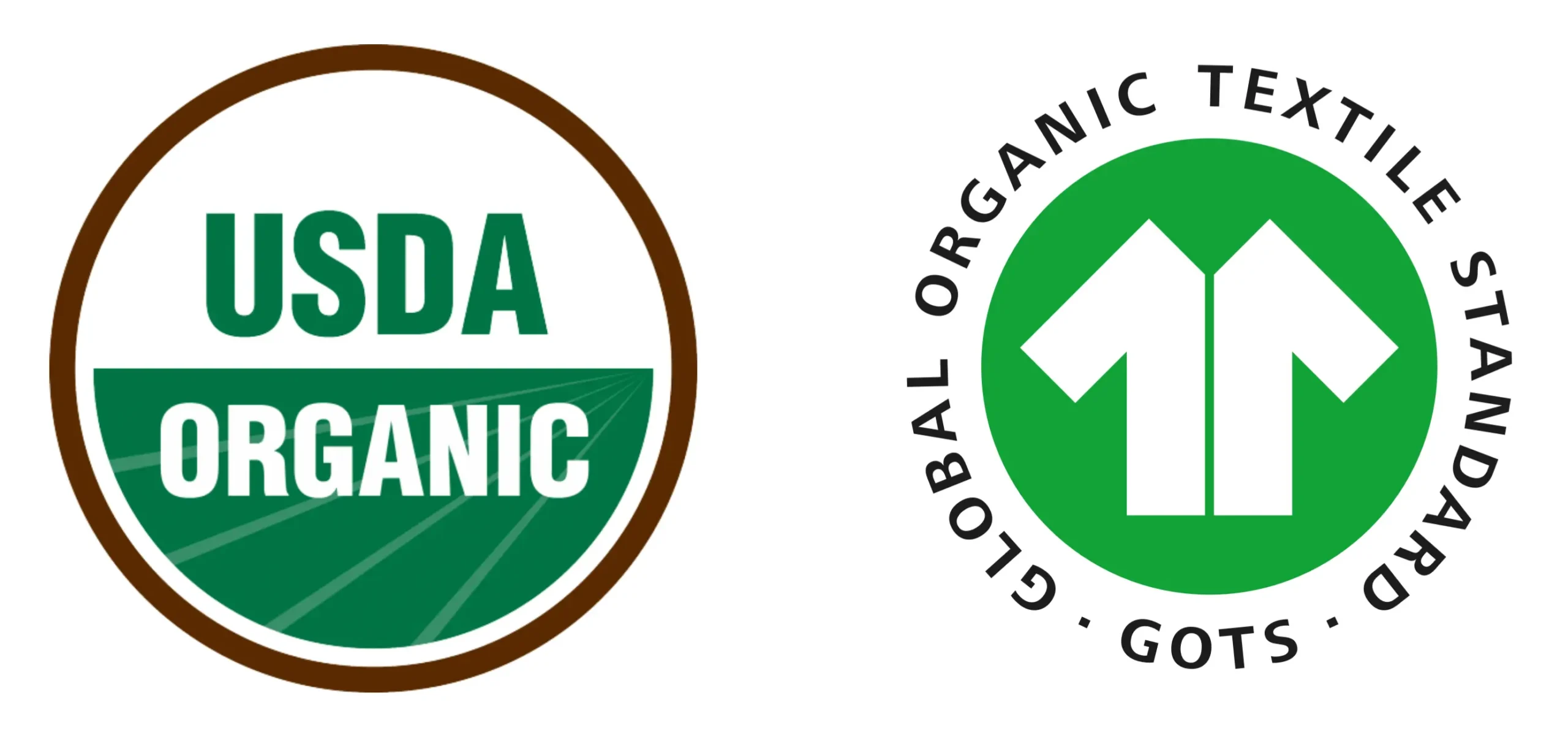


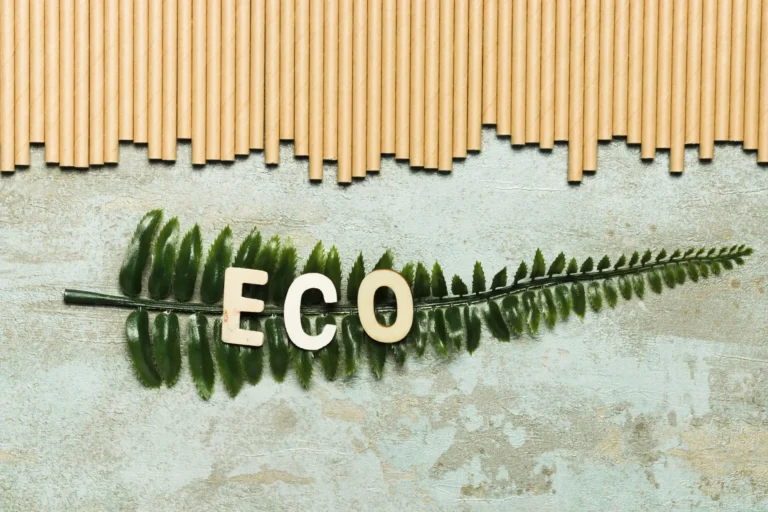
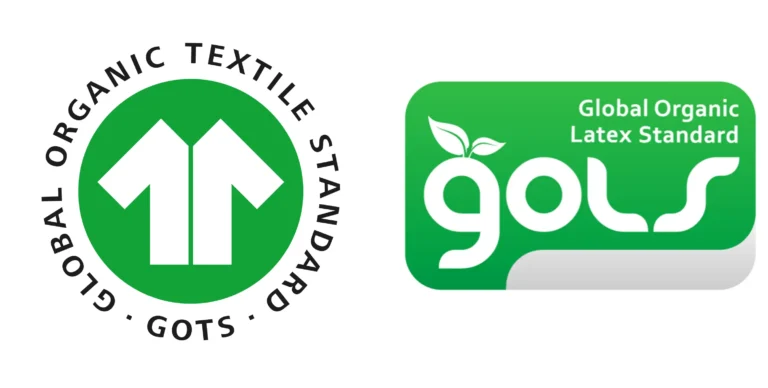
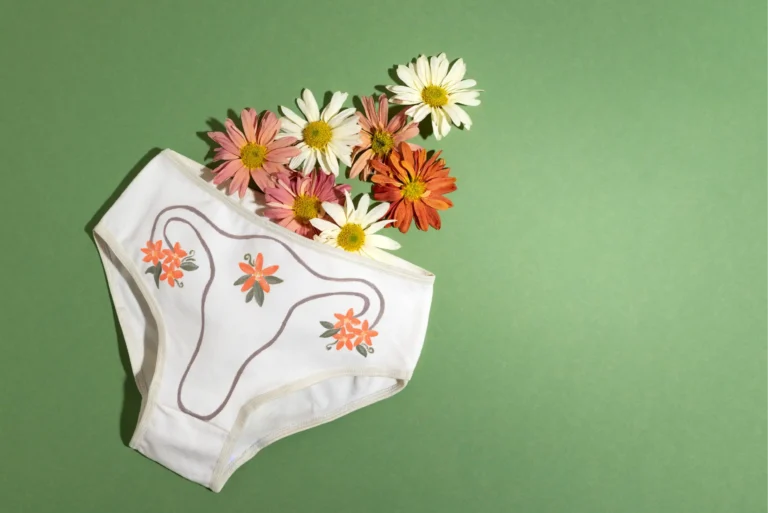
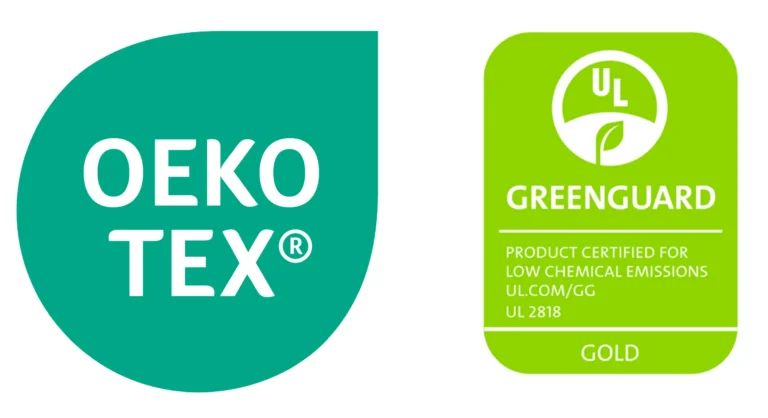
Be Good Do Good – Fashion, The Right Way
Get the Be Good newsletter straight to your inbox. Learn about the fashion industry’s burning problems and sustainability tips, as well as new sustainable and ethical brands.